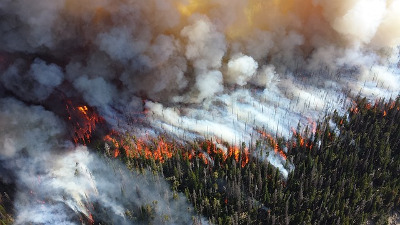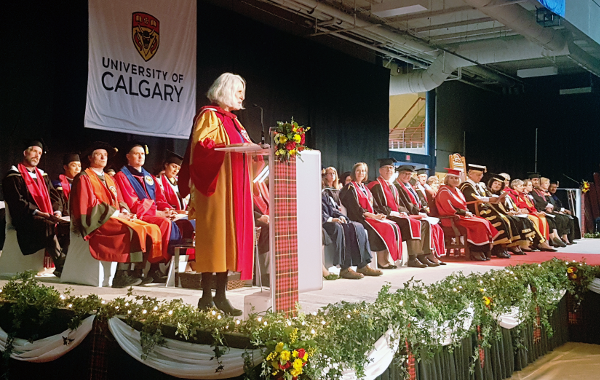WaterPortal launches video on grassland and water health for film competition
The Alberta WaterPortal Society’s submission for Let’s Talk About Water’s 2021 International Film competition emphasizes the benefits that properly managed grasslands can have on water quality and ecosystem health.
The Alberta WaterPortal Society publishes online games and videos for water learning at home
By Alixx Hettinga, Communications Coordinator for the WaterPortal Society
The Alberta WaterPortal Society is releasing fun, new, online materials to make learning about water an adventure you can have from home.
These new resources include interactive games and short animations that make learning fun for everyone. They explore how human actions impact the Nexus between communities, agriculture, and energy, and the resource that ties them all together: water. As the population in Alberta increases, users must contemplate how to balance the demand for water for food, energy, people and the environment.
(more…)
Teaching the value of water, food and energy, Inside Education’s Cultivate 2020: Youth Agriculture Leadership Summit Features the Nexus
By Kathryn Wagner of Inside Education and Brie Nelson of the Alberta WaterPortal Society
The Alberta WaterPortal Society and Inside Education have a shared goal of helping Alberta teachers and students understand the interconnectedness of our water, food and energy systems: The nexus! Connections arise because these systems are reliant not only on each other, but also on the same limited resources. Our systems of producing energy require water; water pumping and treatment requires energy; agricultural production and the whole supply chain requires both water and energy; and our human communities need all of these systems, and the ecosystems that support them, in order to thrive. Recognizing the interconnections of these systems leads to opportunities and innovative problem-solving! (learn more here).
WaterPortal and Waterlution: Exciting New Partnership!
This spring, the Alberta WaterPortal Society partnered with Canadian non-profit, Waterlution to support the development and facilitation of the Water Innovation Lab (WIL) happening in Alberta this fall (October 5-11).
The WaterPortal is very excited about becoming Waterlution’s strategic partner on this project because WIL is an incredible program that puts the Portal’s mission, of improved water management through increased education and awareness, into action. WIL advances this goal by bringing together the brightest and most passionate water leaders to create innovative ideas and projects that address regional water challenges.
Kim Sturgess, founder and Executive Director of the WaterPortal, said of the partnership “WIL provides the perfect framework for knowledge incubation, transfer, and innovation. The WaterPortal will ensure that ground-breaking ideas and projects generated at WIL will have home post-WIL, so that they translate into long-term, meaningful change in Alberta’s waterscape”.
Karen Kun, president and co-founder of Waterlution, echoed these sentiments saying that “the Alberta WaterPortal Society is an incredible tool to seamlessly continue and advance the work done at WIL”.
Promoting source water protection against wildfires in Alberta
By François-Nicolas Robinne of Global Water Futures
North America is perpetually burning, or so it seems! California is experiencing year-long fire seasons, the last two years have been the worst fire seasons on record in British Columbia, and the town of High Level in northern Alberta was evacuated late-May to the out-of-control Chuckegg Creek wildfire. With the hot and dry conditions we have already experienced this spring, it may be a harbinger of another rough summer.
In a context of the climate crisis in which wildfires in Canada will likely happen more often, get bigger and be more severe, learning to live with wildfires also means learning to live with their consequences. This includes fatalities, billions of dollars’ worth of damage, as well as possible impairment of our water supplies, which is growing topic of concern for many communities. In particular, water contaminated by excess nutrients, sediments, and heavy metals transported from burned areas can degrade water treatability and pose serious challenges to downstream drinking water utilities [1,2].

After a severe wildfire, forested watersheds often display altered hydrologic functioning leading to higher runoff and erosion. For example, the speed at which water seeps into the ground versus flowing on the surface into creeks may change. The result is water quality impairments [3] which are of particular concern when those watersheds are sources of drinking-water for downstream communities. This is because drinking-water treatment utilities might not be fully prepared to deal with sudden post-fire water quality changes. Assessing the exposure of these utilities to wildfire-caused alteration of their source water is therefore a first logical step towards mitigating the effects of wildfire, as is the creation of a source water protection strategy.
Why we plan around watersheds
by Jeff Wiehler from the Land Use Planning Hub
A land use plan is a blueprint for the future. It sets out goals for a specific region and then identify what activities, uses or development best fit in the goals. There are two key parts of land use planning:
- What area or region will be covered by the plan
- The goals and uses applicable to that region
The challenges of land use planning typically fall to the second aspect: what set of regulations best reflect the environmental, social and economic goals of a region? How can competing uses or values be considered? These questions are the essence of the difficulty of land use planning, so they tend to be the priority when creating and following land use plans.
Municipal treatment of drinking water is the key to community health, but it can have hidden toxins as well
by Emily Walsh in collaboration with the Alberta WaterPortal
Clean drinking water is something many of us take for granted, while others go to great lengths to protect and restore our natural water resources. The Centers for Disease Control and Prevention (CDC) estimates that 780 million people around the world lack access to a treated water source.1 This does not take into account the treated water billions of people have access to that still contains harmful toxins. Below is a list of toxins sometimes found in tap water and how they get there.
Corporate Water Stewardship: a crucial part of global water security
By Brie Nelson and Edwin Piñero
Commercial and Industrial Water Use and Water Related Risks
Companies that make up the industrial sector and commercial sectors play a significant role in water use. In Alberta, approximately 38% of water allocations are for commercial and industrial activities.1 This number excludes companies that receive their water from municipalities and from irrigation districts. Across Canada, industrial activities withdrew 30.2 billion m3 of water in 2013, approximately 85% of this was for thermal electric generation.2 Almost all of the water withdrawn for these industrial activities was returned to the environment, as seen below in Figure 1.
Words of Wisdom from Alberta’s Aqua Champion, Kim Sturgess

We are still buzzing with inspiration after Kim Sturgess’s convocation speech yesterday after receiving an Honorary Degree of Law from the University of Calgary. Kim provided the engineering graduates with a few words of wisdom as they start on their career paths, but professionals of all experience levels can benefit from her lessons.
1. Live where your heart is happy – For Kim, this is Alberta. From her first summer in mountains as a young summer student, she knew she was home. Find where your heart is happy and make this your home.
2. Follow your passion – Even when your ideas are met with discouragement or confusion, as many great ideas often are, find your supports and follow what you believe in.
3. Honor your profession – An engineer holds a great deal of responsibility and accountability. Be sure to follow the code of ethics and take all responsibilities seriously.
4. STEM starts at home – In the words of Kim, “when that little one comes home and says “I want to be an engineer”, say “fantastic, what can I do to make that come true for you”. Encourage children to follow their passion in STEM from a young age, and do what you can to support those dreams.
In the words of Aritha Van Herk, “with infectious passion, [Kim] has made water her inspiration and spirit … this woman who resonates water’s bright grace, its flow and murmur, and its wellspring importance.” Congratulations Kim.
The good, the bad, and the government: political response to the water crisis in Cape Town
This is a summary of the presentation delivered by Kim Sturgess at The Schulich School of Engineering at the University of Calgary on June 4th, 2018.
In early 2018 the world’s interest and anxiety was captured by the announcement of Day Zero and the online clock counting down toward the projected time when the household taps of Cape Town would have to be turned off and water would be delivered by truck to city residents. Media around the world began talking about water scarcity and examining factors threatening the water supply of other cities. There was a general increase in awareness that municipal water supply could run out and what that could mean for a city. This global ‘conversation’ about water scarcity was a good thing, but there have also been negative consequences to the sensational announcement of #dayzero.
(more…)
